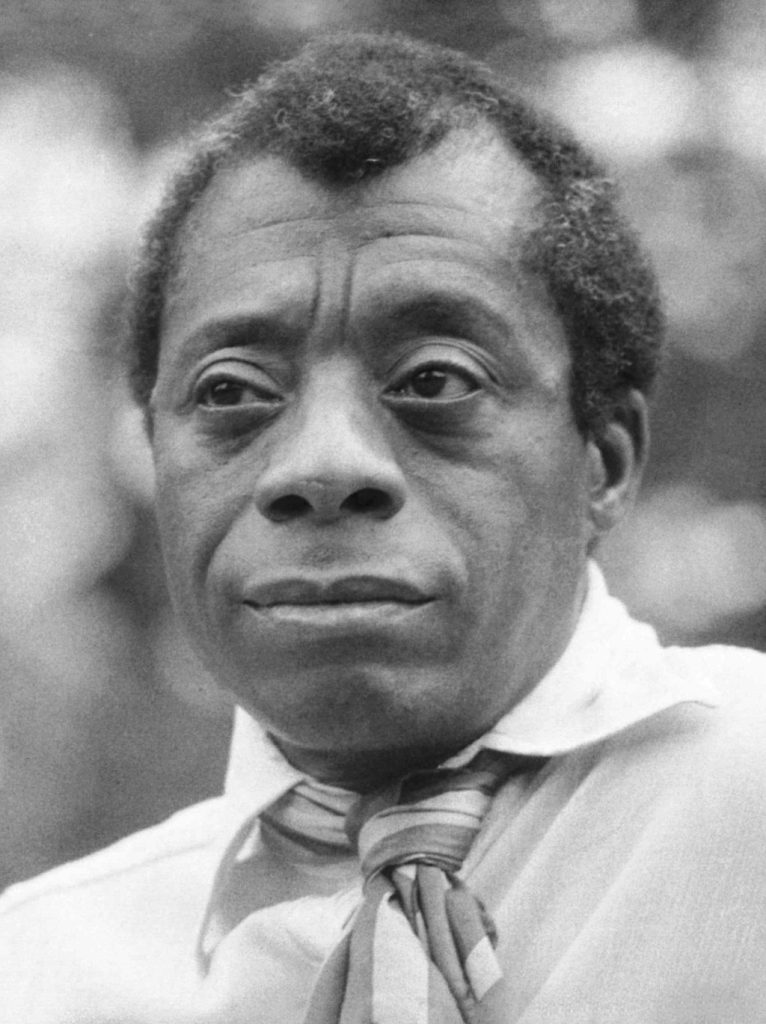90 James Baldwin (1924 – 1987)
Amy Berke; Robert Bleil; Jordan Cofer; and Doug Davis

Photographer Allan Warren
Wikimedia Commons
CC BY-SA-3.0
James Baldwin was born in Harlem, the oldest of nine children. Although he did not know his biological father, Baldwin’s rocky relationship with his stepfather, a lay preacher who shared his name of James Baldwin, was a major influence in both Baldwin’s writings and life. At the age of fourteen, a young Baldwin tried to follow in his stepfather’s footsteps as a preacher, but his interest was short lived. In high school, Baldwin joined the school’s literary magazine and began making trips to Greenwich Village. These trips only further sparked his interests in the arts and befriended many professional artists, including Beauford Delaney, an African-American painter who found fame during the Harlem Renaissance. As he recounts in his essay, “Notes on a Native Son,” Baldwin’s stepfather died in 1943 and was buried on Baldwin’s nineteenth birthday, which was, subsequently, both the day his youngest brother was born as well as the day of the Harlem Riot.
In 1944, after the death of his stepfather, Baldwin moved to Greenwich Village, to focus on becoming a writer. It was here that Baldwin found an artistic community, forming friendships with artists such as Marlon Brando and his literary hero, Richard Wright. With Wright’s help, Baldwin was awarded the Eugene Saxton fellowship (1945). Baldwin began to publish essays in influential magazines, such as The Nation and Partisan Review; however, in 1948, due to his disillusionment as a black, gay man in America, Baldwin followed in the path of other expatriates, including Wright, by moving to Paris. Although he would live in both Switzerland and Turkey, Baldwin eventually settled in Saint-Paul de Vence, South of France.
Baldwin’s first novel, Go Tell It on the Mountain (1953), was a major critical and commercial success. Despite being fiction, the biographical similarities in the novel about a young man, John Grimes who questions the hypocrisy of the church, his own religious upbringing, his own sexuality, and his frustrations with being an African-American were quite transparent. In 1955, he released his first collection of essays, the influential Notes on a Native Son, but it was his follow up novel, Giovanni’s Room (1956), which was the subject of international controversy for its homoerotic content. The novel follows David who, after his girlfriend leaves him, has an affair with an Italian bartender, Giovanni.
The debut of Baldwin’s book of essays The Fire Next Time (1963) only further cemented his reputation as one of the most famous and influential American writers of the twentieth century. Baldwin, despite living in France, was an extremely influential figure during the American Civil Rights movement, aligning himself with the Student Nonviolent Coordinating Committee (SNCC), making several trips to the American South, working with figures such as Martin Luther King Jr. In 1963, he was featured on the cover of Time magazine for his work on the Civil Rights movement.
In his famous short story, “Sonny’s Blues,” Baldwin deals with the conflict between two brothers, one a math teacher and the other, Sonny, a musician recently released from jail. Throughout the story, it becomes clear that the two brothers do not know each other very well and that, although Sonny’s troubles are explicit, the narrator’s troubles are more implicit.
Content Advisory
Literature involves language, descriptions, and/or topics that may be emotionally disturbing, graphic, or otherwise sensitive in nature. These topics (or materials) are important to the course as these words, attitudes, and biases are part of American literature and provide us with opportunities to better understand our history and society.
“Sonny’s Blues”

Or try the link below:
The opposite of implicit, the term explicit refers to things that are clearly and directly stated.
The opposite of explicit, the term implicit refers to things that are implied but not directly expressed.

